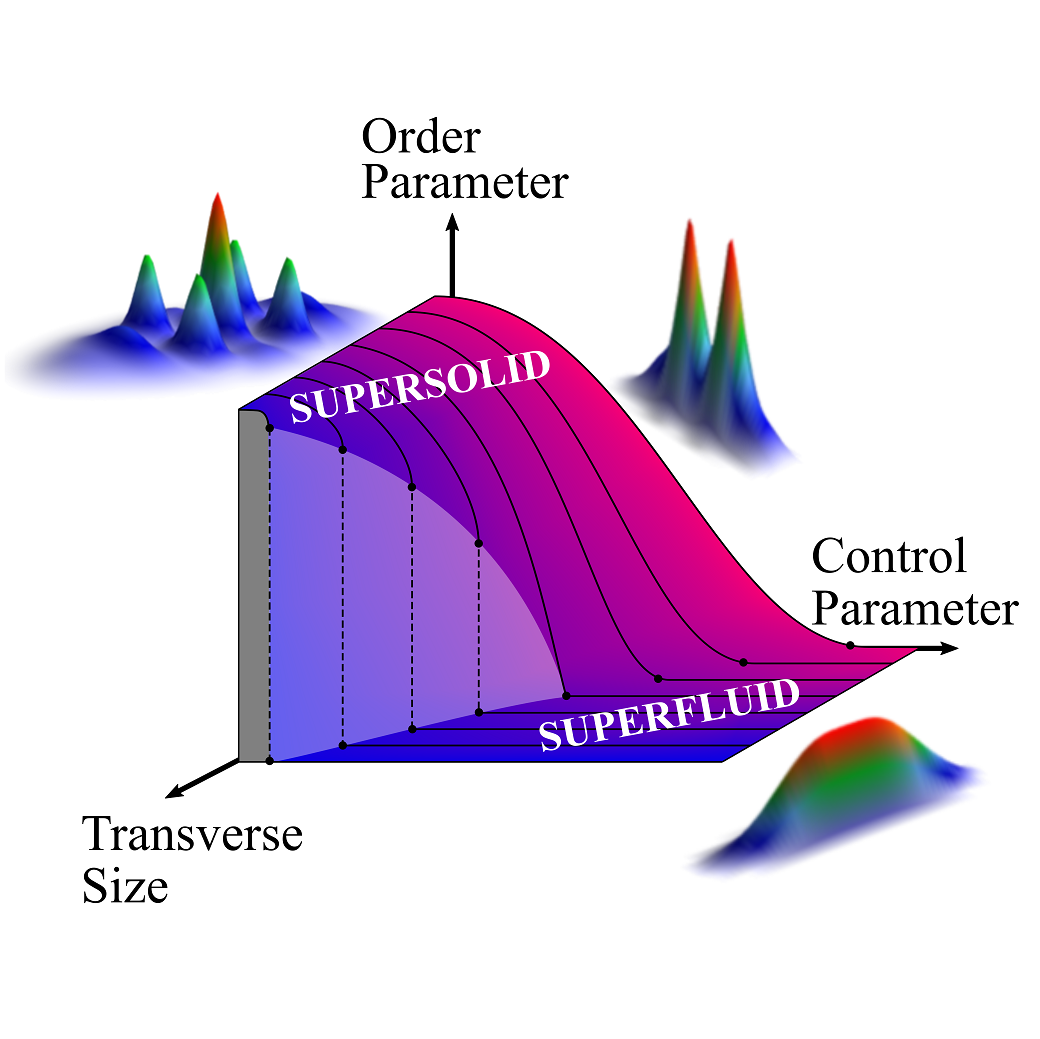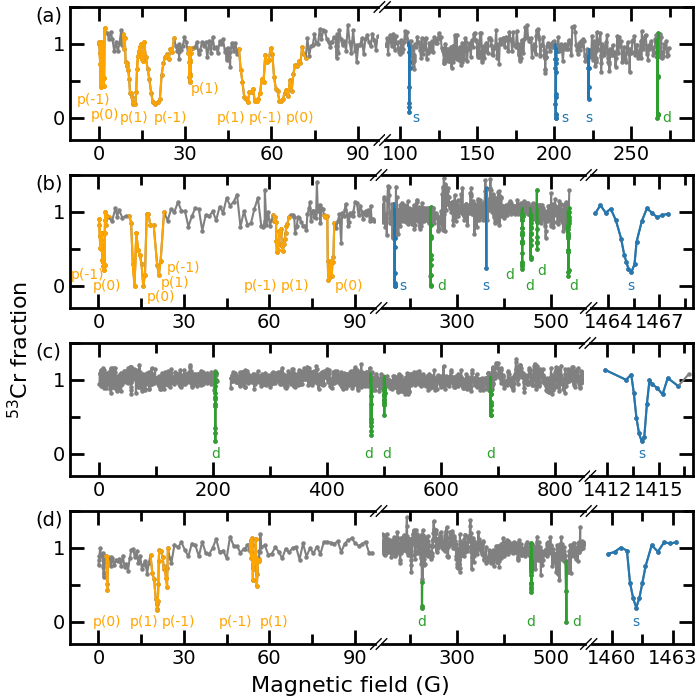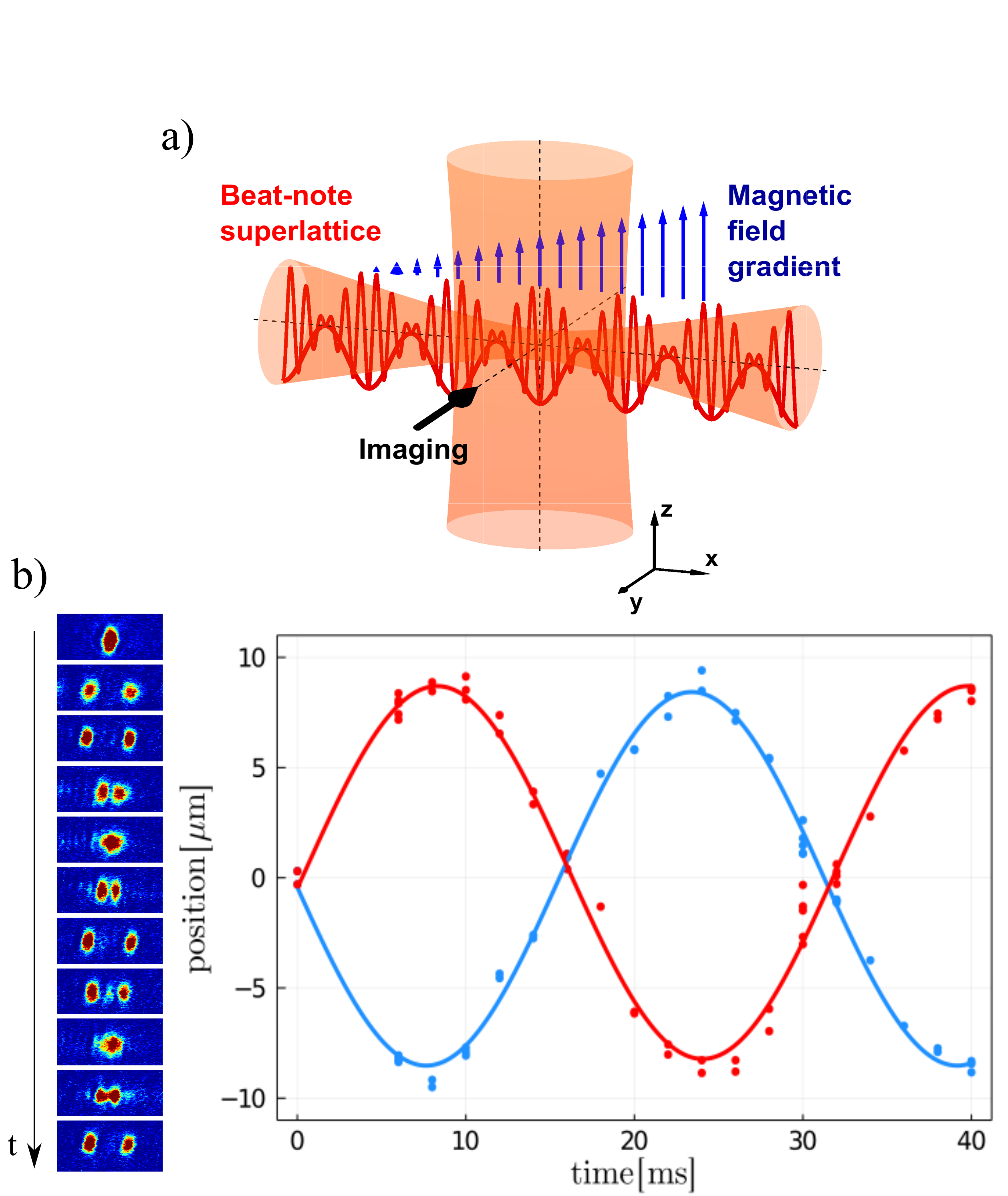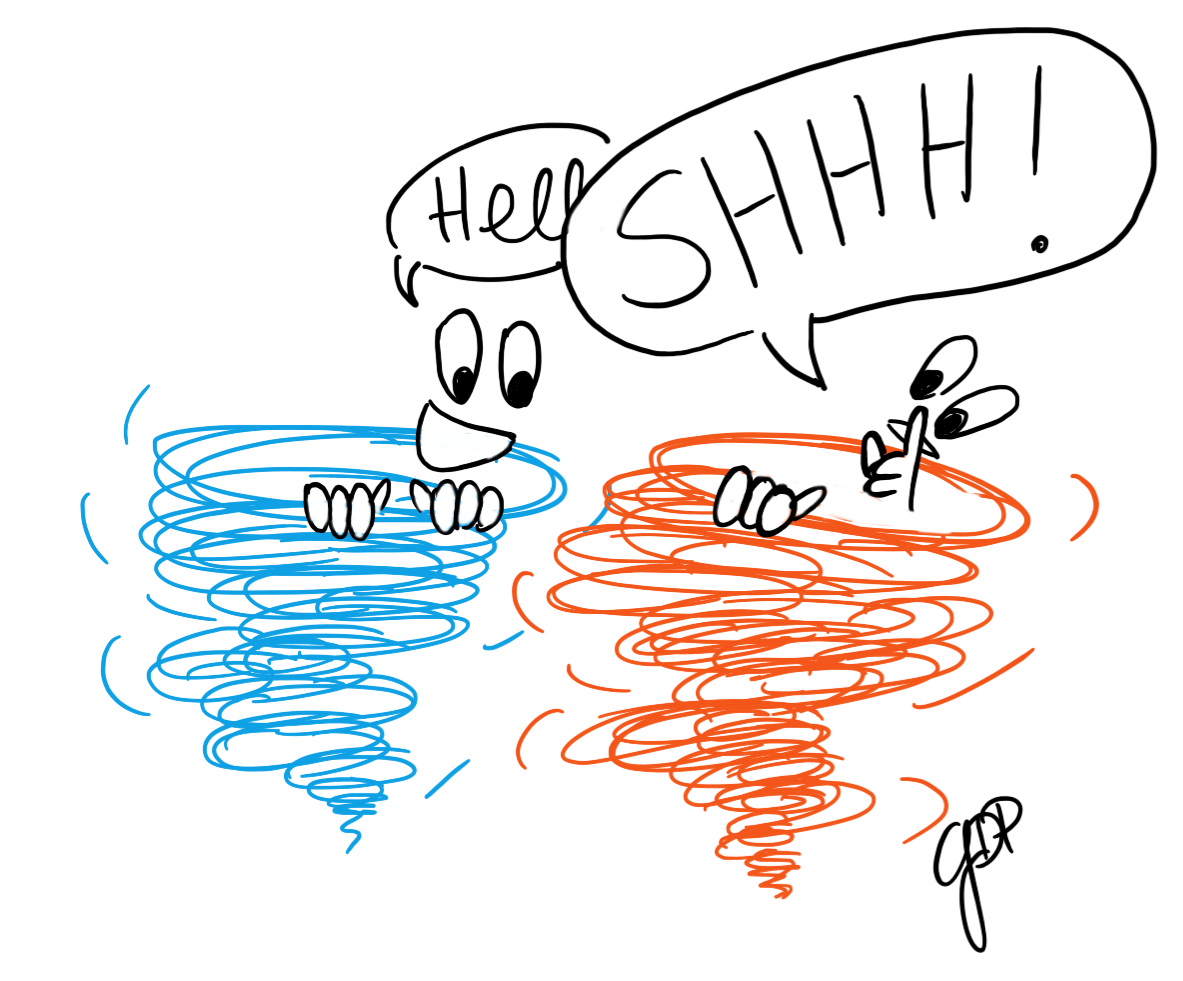 |
The supersolid is a long-sought quantum phase of matter combining properties of superfluids and crystals, finally discovered in quantum gases of magnetic atoms. The experiments usually cross a quantum phase transition from a homogeneous superfluid to the density-modulated supersolid. But very little is known about this novel type of phase transition. Here, we find experimentally and theoretically that the superfluid-to-supersolid quantum phase transition resembles ordinary crystallization transitions but with important novelties due to the peculiar ways in which supersolids are different from superfluids and solids. We see evidence of two types of transitions, continuous and discontinuous, which can be linked to the second- and first-order phase transitions expected for 1D and 2D systems, respectively. Interestingly, we find that the dimensionality of a supersolid depends not only on the underlying lattice structure but also on the structure of the density background that provides phase coherence among lattice sites. Our analysis provides a general framework based on Landau theory—a general theory of phase transitions—which allows us to reconcile previous results in the field. The continuous transitions we find provide access to excitation-free supersolids, which can be employed to study fundamental phenomena such as superfluidity and entanglement in this new state of matter.
G. Biagioni, et al. |
LAST NEWS
 |
A scientific workshop to discuss the most recent advancements in the context of ultracold atom physics and related fields. Experimental and theoretical groups from Palaiseau (France) and Florence (Italy) research areas will present their activities and discuss collaborations in topics ranging from metrology and entanglement to quantum transport and simulation.
The scientific program and all the information for attendance can be found on the workshop website |
 |
Our preprint on ultracold collisions in 6Li-53Cr mixtures is now on the arXiv! We have performed extensive Feshbach spectroscopy of various spin combinations revealing more than 50 resonances between 0 and 1500 G. By means of a full coupled-channel model, we have unambiguously assigned a complete set of quantum numbers to each resonance and derived a thorough characterization of the scattering properties of our system. This has enabled us to identify several resonances suitable for future few-body and many-body studies of mass-imbalanced Fermi mixtures. What is more, our work paves the way to the production of a new class of ultracold molecules possessing both electric and magnetic dipole moments. Stay tuned! A. Ciamei et al. |
 |
Atom interferometry with trapped samples offers the advantage of long interrogation times in compact setups, measuring forces and local fields with spatial resolution of a few micrometers. Here, we experimentally demonstrate a multimode interferometer comprising a Bose-Einstein condensate of 39K atoms trapped in a harmonic potential, where the interatomic interaction is canceled exploiting Feshbach resonances. A pulsed optical lattice coherently splits the BEC in multiple momentum components (Kapitza-Dirac diffraction), that form different interferometric modes oscillating in the harmonic potential along separate trajectories. When these trajectories recombine after half- or full-oscillation period, a second Kapitza-Dirac diffraction reshuffles the momentum components, i.e. the interferometer modes: the relative modal amplitudes at the interferometer output are sensitive to external forces, through the induced displacement of the harmonic potential. We characterize the interferometer performance and discuss perspective improvements. L. Masi et al. |
 |
We realize a programmable quantum vortex collider in planar and homogeneous atomic Fermi superfluids with tunable inter-particle interactions. We follow a bottom-up approach reminiscent of other atomic platforms featuring control at the single-particle level, and gain exquisite control of individual 2D vortices to assemble them one by one in arbitrary arrangements. In particular, we use the combination of a high resolution microscope objective and a Digital Micromirror Device to create on-demand vortex configurations and we monitor their evolution across the BEC-BCS regimes of fermionic superfluidity. By engineering collisions within and between vortex–antivortex pairs we distinguish the different relaxation processes of the irrotational vortex energy due to sound emission and due to interactions with normal fluid. For the first time, we directly visualize how the annihilation of vortex dipoles radiates a sound pulse. We progress towards a complete microscopic description of the dissipative dynamics of both single and colliding vortex–antivortex pairs, which is at the heart of the relaxation of non-equilibrium states in bosonic and fermionic superfluids, thereby opening the route to exploring new pathways for quantum turbulence decay, vortex by vortex. W. J. Kwon et al. |
